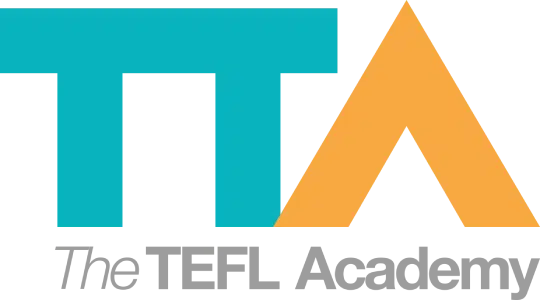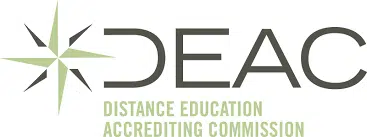CEFR Levels Explained: What Do The Different Levels Mean?
Join a global community of over 200,000 TEFL teachers working throughout the world! Enrol me!
Ever tried to teach a class of students the third conditional and your students left the classroom looking like deflated balloons?
Chances are, you were aiming your lesson at the wrong level.
But what does that mean exactly?
In English language teaching, we often talk about “levels” or “CEFR levels”. The CEFR is an important tool for TEFL teachers in the classroom. Understanding the CEFR English proficiency levels helps you teach appropriate content, set realistic goals, and make your lessons more effective.
We roped in TTA Teacher Trainer Yasmien to explore what CEFR levels are in English, look at the CEFR A1 to C2 guide, and share tips for using the CEFR language levels chart in your classroom.
Yasmien, let’s start with the basics:
What are CEFR levels in English?
CEFR is short for the Common European Framework of Reference. This system is an international grading system that represents a person’s level of language proficiency. A person’s language proficiency can be measured using the six CEFR English proficiency levels:
A1 – Beginner
A2 – Elementary
B1 – Intermediate
B2 – Upper-Intermediate
C1 – Advanced
C2 – Proficiency
Educators, curriculum planners, language examiners, and especially TEFL teachers use the CEFR to:
- teach the appropriate language components of each CEFR level.
- set lesson objectives and expectations.
- work towards increasing their students’ language proficiency.
- test students during oral and written exams.
The CEFR isn’t just for English—it can be applied to learners of all languages.
Why CEFR levels matter in English Language Teaching
When planning an ESL or EFL lesson, be it in a classroom or online, using the CEFR is vital – especially if you are a new TEFL teacher. For teachers, it provides structure and clarity. For students, it sets realistic goals and motivates progress.
Knowing your students’ CEFR levels helps you:
- set short-term and long-term learning goals.
- plan lessons in a sequence so that each lesson builds on the last.
- choose relevant and appropriate activities, materials and assessments.
- measure student progress.
For newer TEFL teachers, it’s a way to not only grade their lessons but also grade themselves – their language and instructions. Hopefully with a knowledge of the CEFR levels, you won’t pitch a lesson at the wrong level!
I’ve done this! I was teaching English in South Korea, and had to teach Grades 4-6 during their Winter English Camp. On one day, I used the same lesson plan and content, on the topic of astronomy, for all grades! I thought it would be fine to give each grade the same activities, worksheets, and use the same PPT. It was not fine. The Grade 6 class was comfortable with the content, but the Grade 4 and 5 students were lost. I didn’t level the content to match my students’ CEFR levels. It was a complete bust!
On the other side of the coin, students benefit from a knowledge of the CEFR levels because they can:
-
see their progress clearly
-
set achievable learning goals
-
choose the right books and resources for their level
CEFR A1 to C2 Guide: Level Descriptions
The CEFR is laid out so that it’s understandable for even inexperienced teachers. Each level is described with a Can-Do statement.
Here’s a quick CEFR A1 to C2 guide that outlines what learners can do at each stage to help teachers and learners quickly identify where they are, and where they want to be:
A1 —> Beginner: Can use simple sentences, “I live in Japan”, basic phrases “nice to meet you”, and everyday expressions like “hello, how are you?”.
A2 —> Elementary: Can communicate in short, simple conversations on familiar topics like hobbies, shopping, and routines.
B1 —> Intermediate: Can handle most everyday situations, describe experiences, and express opinions on familiar subjects.
B2 —> Upper-Intermediate: Can participate in discussions, understand more complex texts, and communicate with fluency and detail.
C1 —> Advanced: Can understand subtext, express ideas fluently and flexibly, and adapt tone depending on context.
C2 —> Proficiency: Can understand virtually everything they read or hear and express themselves precisely and naturally.
Using CEFR levels in the EFL classroom
So how do you use CEFR English proficiency levels in your classroom? Here are practical teaching tips from trainer Yasmien:
A1 —> Beginner
- Students learn basic and very common vocabulary and phrases, mainly through repetition. The use of TPR and visuals helps convey meaning.
- Instruction is very basic and short to accommodate students’ low level of proficiency.
Tip: To help with adapting vocabulary to your CEFR lesson, use Vocab Kitchen.
A2 —> Elementary
- Students practise basic conversation through dialogue and role-playing.
- Videos and images are used to support comprehension as well as instruction.
Tip: Scaffold tasks by breaking them into smaller steps.
B1 —> Intermediate
- Students are now encouraged to share their opinions and talk about their personal experiences.
- Activities include listening comprehension, using authentic texts such as newspaper articles, blogs, etc.
Tip: Get students to first talk in pairs to develop their confidence.
Read more: Authentic Materials: How To Find Them And How To Use Them
B2 —> Upper-Intermediate
- Facilitating oral discussions through debates, presentations, and group discussions supports fluency development.
- Students are introduced to idioms, taught how to connect sentences to sound more fluent using connectors (eg, although, on the other hand, as a result), and vocabulary is gradually enhanced.
Tip: EFL and ESL students are understandably hesitant when it comes to standing in front of the class and speaking. I find that prompting students with questions like “Why do you think that?” or ” Can you give me an example?” helps students speak more freely, as it is more conversational and lessens the pressure.
C1 —> Advanced
- Students analyse, discuss, and present their own ideas on more challenging content, such as research-based articles, videos, interview transcripts, and academic writing.
- Students learn how to adapt their writing and speaking to suit different contexts and situations, including adjusting tone, vocabulary, and style.
Tip: Keep it fun! Get students talking by posing relevant topics to debate and discuss. Nothing gets students talking like a current hot topic.
C2 —> Proficiency
- Vocabulary is further developed, along with frequent speaking activities to refine fluency even more.
- Tasks comprise presentations, creative writing, debates, etc.
Tip: Use the Teacher AI Assistant – Khanmigo to help adapt any lesson to suit your students’ CEFR level, and help out with other admin-related tasks.
Final thoughts: Why TEFL teachers should rely on CEFR
The CEFR levels explained above show why this framework is invaluable in English language teaching. It helps teachers set realistic expectations, measure progress, and plan effective lessons.
Imagine winging a lesson and asking your A1 students to debate the effects of inflation. It will be comical, or awkward, but not productive.
Soon, it will be second nature and you will be able to grade your students off the cuff. For now – lean on the CEFR.
Thanks for all the tips, Yasmien!
Accreditation & Quality Assurance
The TEFL Academy was the world’s first TEFL course provider to receive official recognition from government regulated awarding bodies in both the USA and UK. This means when you graduate you’ll hold a globally recognised Level 3 (120hr) Certificate or Level 5 (168hr) Diploma, meaning you can find work anywhere and apply for jobs immediately.
 United States
US
United States
US















